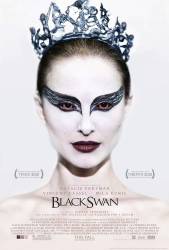Other mistake: When Nina and Lily are at the bar, it shows Lily move to the seat directly to Nina's right, thus placing Nina on the right side of Lily. However, the entire time they converse, Lily's eyes are looking to her left. Same goes for Nina who is looking to her right the entire time.
Other mistake: When Lily and Nina are at dinner, Lily is surprised that Thomas calls Beth "Little Princess." This shouldn't be new to her since he addressed Beth as "Little Princess" at the gala where he announces Beth's departure and introduces Nina as the Swan Queen.






Answer: **Spoiler Alert** I would say you are correct about the movie being a metaphor for descent into madness, but also displays themes of repressed sexuality and transformation. As the main character is given the lead role, she must play dual roles, one good and one evil, with the hallucinations representing the latter. Towards the beginning, Nina only embodies the personality traits of the white swan, innocence and grace. As the film gradually progresses, Ninas hallucinations represent her metamorphosis into the seductive and mysterious black swan. The film expertly convinces the audience that Lily (Mila Kunis) is out for Nina's role. In a twist ending, it is revealed that Nina has imagined most of her encounters with lily (including their sexual one) and has instead been battling herself, such as breaking away from her domineering mother and coming to terms with her sexuality. At the end, Nina really does stab herself (but actually hallucinates it is Lily she is stabbing) and her fate is left ambiguous.